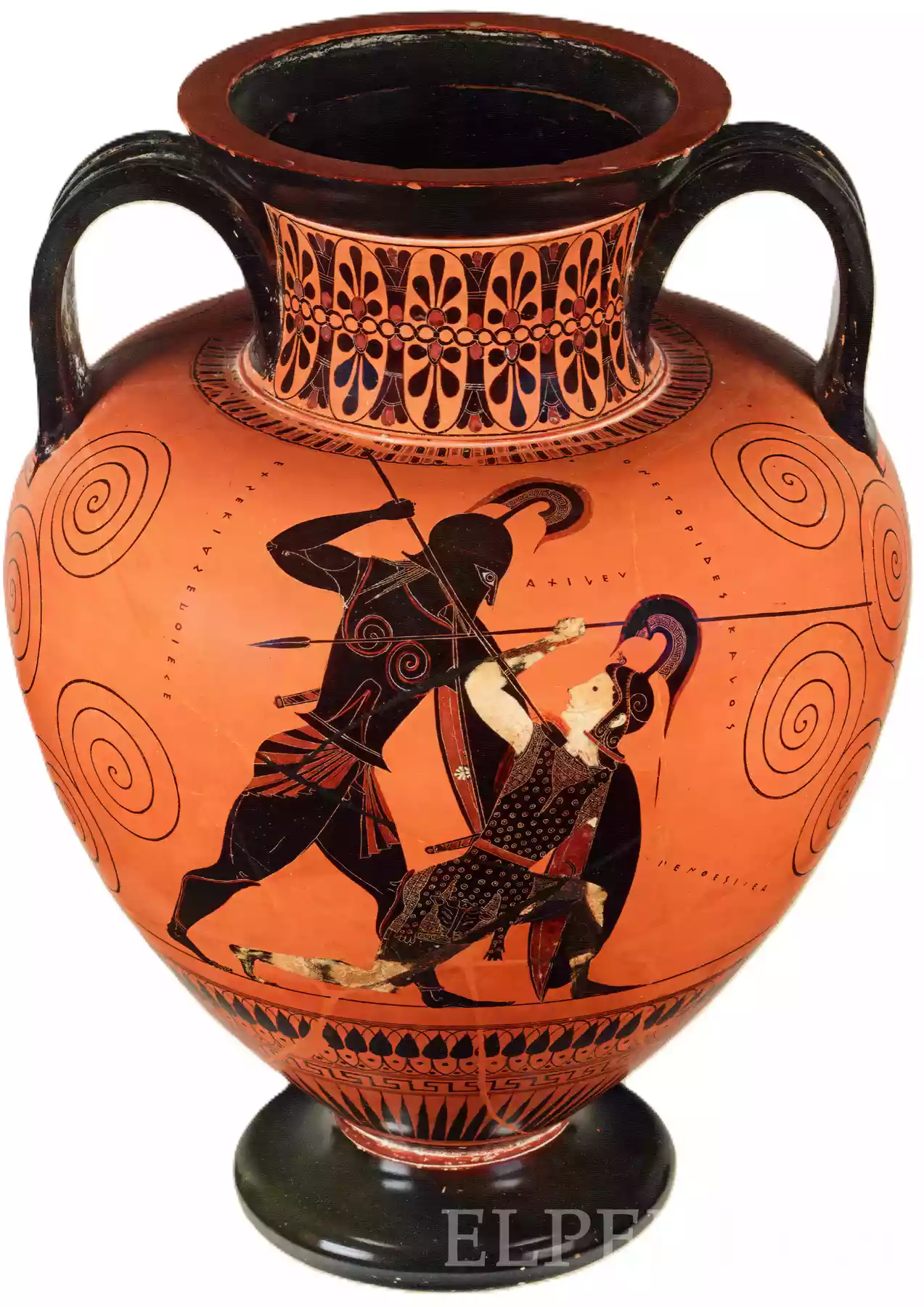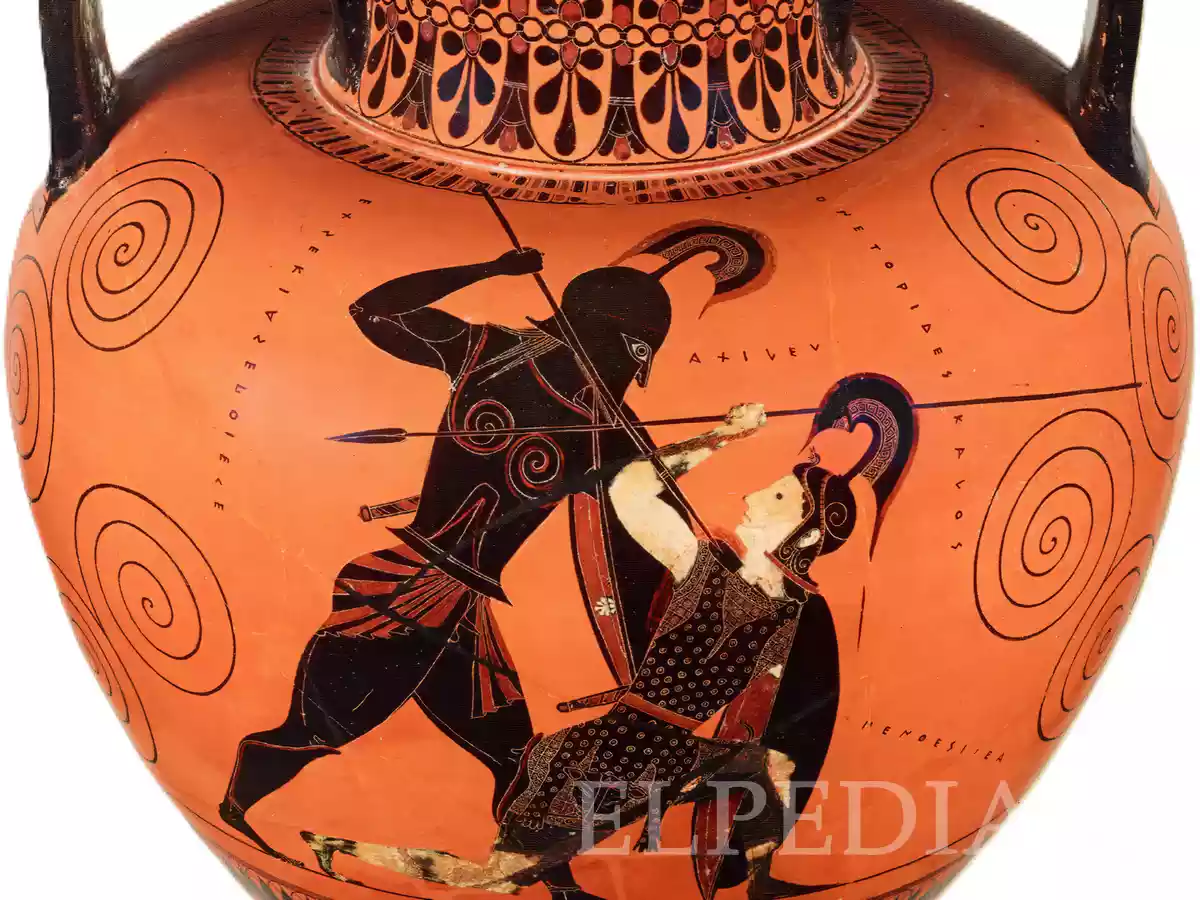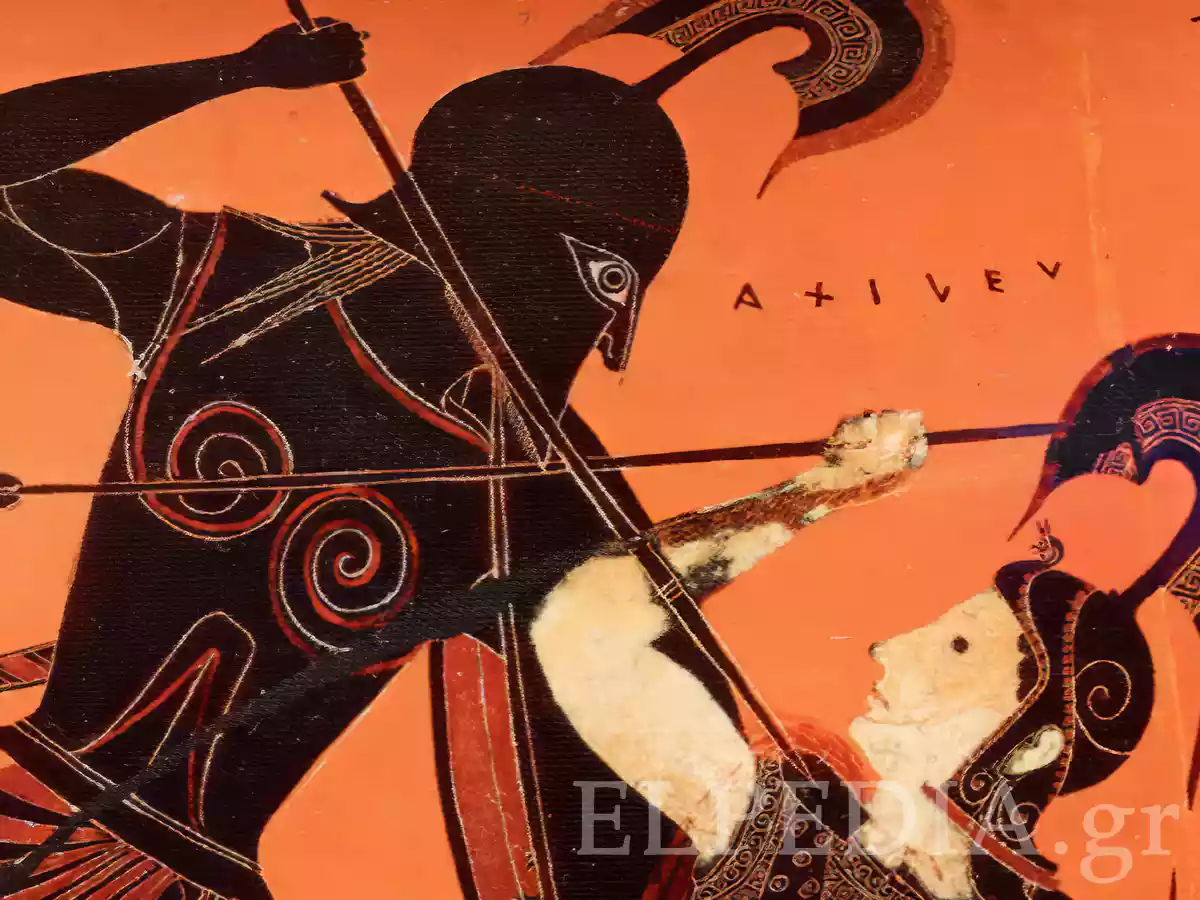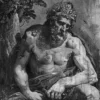
The Exquisite Craftsmanship of Exekias: A Masterpiece of Attic Black-Figure Vase Painting
The amphora showing Achilles and Penthesilea is an exquisite piece of artwork created by the ancient Greek vase painter Exekias. It dates to around 540-530 BC and is currently housed in the British Museum. This 41-centimeter-tall vase captures a duel between two legendary figures: Achilles and Penthesilea. This momentous occasion in Greek mythology— one of the base stories upon which Western art and literature were built— is happening right as you look at it. Not only is this an intense moment between two figures that Exekias has rendered with incredible skill, it is also the moment in the base story where the figure of Achilles equates to the height of the lead role in an ancient vase. This equating moment is happening here and also happening in the 6th-century BC in Athens, where it served as a model for artistic expression. The next time you find yourself in the British Museum, look for the black-figure amphora depicting Achilles and Penthesilea. It’s a moment intense enough to still resonate almost 2,600 years after its depiction.
Exekias’s Technique and Artistic Style
The black-figure technique of Attic vase painting reached its zenith in the latter half of the 6th century BC, and Exekias was one of its most celebrated practitioners. His style is characterized by immense detail and a near-perfect understanding of the human form, surpassing (in many cases) other forms of Greek art in the emotion conveyed through the figures portrayed. As John Boardman points out in his influential book on Greek art, Exekias does not combine figures on his vases in a random fashion but stages them to make a coherent statement and create a dramatic scene. “He is always a step ahead in seeing what could be done,” asserts Boardman.
In ancient Greek art, the black-figure technique consisted of painting figures in black silhouette against a backdrop of red clay. The artists of this era did more than just perform the black-figure technique; they pushed it toward new horizons, seeking novel ways of exploiting its potential. They carved ever-closer-to-finished forms into the figures and painted ever-smaller details of scene composition and figure characterization. Indeed, they worked so hard at rendering the latter two features that some modern art historians have looked back on the creators of the black-figure paintings with something akin to the reverence we feel toward the creators of finely wrought illuminated manuscripts during the Middle Ages.
This amphora’s unusual preservation allows for a clear appreciation of its decoration. The neck is adorned with palmette and lotus plants, while the shoulders have a tooled geometric pattern. The main event, the fight between Achilles and Penthesilea, covers much of the surface of the body, framed by decorative bands that have been allegorically interpreted as not just ornamental but also evocative of the swirling motion of this exciting fight. For those who view the amphora while the two figures are in motion—which is what one does if one studies it closely—there is a sense that the frame serves to concentrate the viewer’s attention on the scene. In the contexts of ancient art and art history, this is a very famous painting for many reasons, but especially for what it does in terms of composition.

The Myth of Achilles and Penthesilea
The mythological narrative of the meeting of Achilles with Penthesilea is one of the most thrilling moments of the Trojan cycle. In the prevailing version, the queen of the Amazons arrived in Troy after Hector’s death to assist the besieged Trojans. Her presence on the battlefield marked a new dynamic in the war.
The Amazons, a tribe of warrior women, held a special place in mythological tradition. They lived on the fringes of the Greek world and symbolized the “other,” the exotic and the dangerous. Penthesilea, daughter of Ares, stood out for her bravery and strategic prowess. Her duel with Achilles symbolized the clash between the Greek world and the “barbarians.”
In the central scene of the vessel, the dramatic moment is captured with exceptional skill. The two figures are rendered in a dynamic composition, where the movement and intensity of the battle are evident. The warriors’ armor is depicted with great detail – Achilles’ armor and Penthesilea’s Amazonian equipment indicate their different origins.
The depiction transcends the simple portrayal of a martial conflict. The moment chosen is when Achilles, defeating Penthesilea, realizes her beauty. The tragic irony of the scene lies in the fact that this recognition comes at the moment of her death. The composition captures the delicate balance between violence and attraction, death and love, war and humanity.
The narrative power of the scene is enhanced by the skillful use of space and the careful placement of the figures. The weapons, shields, and decorative elements create a frame that emphasizes the drama of the moment, while the details in the rendering of the faces and garments testify to the artist’s high technical proficiency.

The Legacy of the Work
The timeless value of the black-figure amphora in the history of art remains indisputable. This masterpiece serves as a reference point for the study of archaic vase painting, as it combines technical perfection with the deep symbolic dimension of the depicted scene.
The influence of the composition on later artistic production was decisive. The dramatic depiction of the duel inspired numerous artists in the centuries that followed. As noted in the relevant literature, the scene became a model for depicting similar themes in ancient Greek art (Laryngakis 2016).

Archaeological and Historical Significance
The work is a valuable source of information for understanding ancient Greek society and its perceptions. The detailed depiction of weaponry and clothing provides significant insights into the material culture of the time. At the same time, the composition reflects the social perceptions and cultural norms of the archaic period.
Contemporary studies approach the work through various theoretical frameworks. The analysis of the iconography extends beyond simple description, examining the social, political, and philosophical dimensions of the depiction. Particular emphasis is placed on the study of gender relations and cultural symbols embedded in the scene.
Modern research also highlights the significance of the work in understanding the techniques of ancient vase painting. The excellent preservation of the amphora allows for a detailed study of the methods of construction and decoration of vessels from the archaic period, offering valuable insights into the evolution of ceramic art.
The black-figure amphora of the 6th century BC emerges as one of the most important examples of archaic vase painting. The craftsmanship in the rendering of the figures, the drama of the composition, and the symbolism of the scene demonstrate the high artistic value of the work. The depiction of the duel between Achilles and Penthesilea captures not only a mythological moment but also deeper social and cultural perceptions of the time. The timeless influence of the work on art and its significance for understanding ancient Greek society make it an integral part of the world’s cultural heritage.
elpedia.gr
Bibliographic References
Beazley, John Davidson. “The Development of Attic Black-Figure.” Berkeley and Los Angeles: University of California Press, 1951.
Boardman, John. “Exekias.” American Journal of Archaeology 82, no. 1 (1978): 11-25.
Laryngakis, Panagiotis. “The Amazonomachy in the Art of the Archaic, Classical, and Hellenistic Periods.” Doctoral dissertation, University of Thessaly, 2016.

